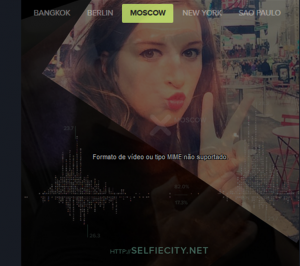IFORS Linear_Programming
Posted by Armando Brito Mendes | Filed under Investigação Operacional, materiais ensino
The following 16 pages are in this category, out of 16 total.
DL |
L cont. |
MORT |
Tags: otimização, software de otimização
IFORS Decision Analysis & DSS
Posted by Armando Brito Mendes | Filed under ADM - multicritério, Investigação Operacional, materiais ensino
The following 28 pages are in this category, out of 28 total.
Tags: decisao em grupo, decisão médica
IFORS Education Resources Project
Posted by Armando Brito Mendes | Filed under estatística, Investigação Operacional, SAD - DSS, software
Welcome to the International Federation of Operational Research Societies (IFORS) Education Resources Project
- Main Page (19:13, 3 December 2013)
- Biased Random-Key Genetic Algorithms: A Tutorial (21:57, 2 December 2013)
- The Discrete Event System Specification Formalism (19:59, 2 December 2013)
- Urban Operations Research (01:36, 2 December 2013)
- Stochastic Models for Design and Planning (01:34, 2 December 2013)
- Queueing Theory Books Online (01:31, 2 December 2013)
- Practical Queueing Theory in Java (01:31, 2 December 2013)
- Explore Queueing Theory for Scheduling, Resource Allocation and Traffic Flow Applications (01:28, 2 December 2013)
- Stochastic Processes Course Notes (01:26, 2 December 2013)
- Test Problems for Non-Linear Programming (01:23, 2 December 2013)
- OR Notes: Separable Programming (01:21, 2 December 2013)
- OR Notes: Non-Linear Programming (01:20, 2 December 2013)
Tags: decisao em grupo, decisão médica, otimização, previsão, problemas, programação em folha de cálculo, software de otimização, software estatístico
portal smart datacollective.com
Posted by Armando Brito Mendes | Filed under materiais para profissionais
SmartData Collective, an online community moderated by Social Media Today, provides enterprise leaders access to the latest trends in Business Intelligence and Data Management. Our innovative model serves as a platform for recognized, global experts to share their insights through peer contributions, custom content publishing and alignment with industry leaders. SmartData Collective is a key resource for executives who need to make informed data management decisions.
Tags: análise de dados, big data, bioinformatica, captura de conhecimento, data mining, decisao em grupo
Useful Videos on Information Visualization
Posted by Armando Brito Mendes | Filed under estatística, videos, visualização
Noah Iliinsky – Data Visualizations Done Wrong – A Beautiful Collection of Stories and Tips for Success.
The Four Pillars of Data Visualization
Designing Data Visualizations with Noah Iliinsky
Best Practices for Data Visualization
Designing Data Visualizatins
Seeing the Story in the Data and Learning to Effectively Communicate – Inspired by Stephen Few Principles, Visualization Guru
David McCandless: “The beauty of data visualization” – Data Detective Telling Stories From Visualization of Information
This also has a nice quiz about visualization principles.
As I collect more, I will consolidate this list.
Tags: belo, big data, data mining, image mining
selfiecity
Posted by Armando Brito Mendes | Filed under videos, visualização
Investigating the style of self-portraits (selfies) in five cities across the world.
Selfiecity investigates selfies using a mix of theoretic, artistic and quantitative methods:
- We present our findings about the demographics of people taking selfies, their poses and expressions.
- Rich media visualizations (imageplots) assemble thousands of photos to reveal interesting patterns.
- The interactive selfiexploratory allows you to navigate the whole set of 3200 photos.
- Finally, theoretical essays discuss selfies in the history of photography, the functions of images in social media, and methods and dataset.
Selfiecity, from Lev Manovich, Moritz Stefaner, and a small group of analysts and researchers, is a detailed visual exploration of 3,200 selfies from five major cities around the world. The project is both a broad look at demographics and trends, as well as a chance to look closer at the individual observations.
There are several components to the project, but Imageplots (which you might recognize from a couple years ago) and the exploratory section, aptly named Selfiexploratory, will be of most interest.
The two parts let you filter through cities (Bangkok, Berlin, Moscow, New York, and Sao Paulo), age, gender, pose, mood, and a number of other factors, and this information is presented in a grid layout that self-updates as you browse.
So you can get a rough sense of how facets relate. There seems to be a higher proportion of female selfies and average age seems to skew towards younger as you’d expect. The average age of females in this selfie sample seems to be younger than that of males.
However, before you jump to too many conclusions about how countries vary or differences between the sexes, etc, consider the classification process, which was a combination of manual labor via Mechanical Turk and face recognition software. Age, for example, can be though to estimate from pictures alone since you have outside factors like makeup, angles, and poses. Do these things account for the two- to three-year average difference between the sexes? Maybe. So consider the data. But that should go without saying.
That said, Selfiecity is a fun one I spent a good amount of time browsing. It’s a weird, tiny peek into 3,200 people’s lives, with a dose of quant and art. And don’t miss the theoretical component in essay format, a reflection of social media, communities, and the self.
Tags: belo, data mining, image mining
Data Intelligence and Analytics Resources
Posted by Armando Brito Mendes | Filed under materiais para profissionais, software, videos, visualização
3. Big Data
- Practical illustration of Map-Reduce (Hadoop-style), on real data
- A synthetic variance designed for Hadoop and big data
- Fast Combinatorial Feature Selection with New Definition of Predictive Power
4. Visualization
- Detecting Patterns with the Naked Eye
- 50+ Open Source Tools for Big Data
- 40 maps that explain the world
5. Best and Worst of Data Science
- 175 Analytic and Data Science Web Sites
- 6000 Companies Hiring Data Scientists
- 100 data science, analytics, big data, visualization books
6. New Analytics Start-up Ideas
- Uniquely identify a human being with two questions
- Selling data
- A new type of weapons-grade secure email
- R in your Browser
7. Rants about Healthcare, Education, etc.
- Why statistical community is disconnected from Big Data and how to fix it
- How to eliminate a trillion dollars in healthcare costs
- Job interview question: what is wrong with this picture?
8. Career Stuff, Training, Salary Surveys
- 17 short tutorials all data scientists should read (and practice)
- Why Companies can’t find analytic talent
- Six categories of data scientists …
9. Miscellaneous
- One Page R: A Survival Guide to Data Science with R
- Boosting Algorithms for Better Predictions
- Structuredness coefficient to find patterns and associations
10. DSC Webinar Series – with video access
- Predictive Analytics with Revolution Analytics and Hortonworks, The…
- BI For Big Data
- The Value of a Modern Data Architecture with Apache Hadoop and Tera…
- Accelerating Big Data
Tags: big data, captura de conhecimento, data mining, R-software
17 short tutorials all data scientists should read
Posted by Armando Brito Mendes | Filed under estatística, materiais para profissionais
Here’s the list:
- Practical illustration of Map-Reduce (Hadoop-style), on real data
- A synthetic variance designed for Hadoop and big data
- Fast Combinatorial Feature Selection with New Definition of Predict…
- A little known component that should be part of most data science a…
- 11 Features any database, SQL or NoSQL, should have
- Clustering idea for very large datasets
- Hidden decision trees revisited
- Correlation and R-Squared for Big Data
- Marrying computer science, statistics and domain expertize
- New pattern to predict stock prices, multiplies return by factor 5
- What Map Reduce can’t do
- Excel for Big Data
- Fast clustering algorithms for massive datasets
- Source code for our Big Data keyword correlation API
- The curse of big data
- How to detect a pattern? Problem and solution
- Interesting Data Science Application: Steganography
Related link: The Data Science Toolkit
Tags: análise de dados, big data, captura de conhecimento, data mining, Excel, R-software
Little Book of R for Time Series!
Posted by Armando Brito Mendes | Filed under estatística, software
- How to install R
- Using R for Time Series Analysis
Tags: previsão, R-software
Tipos de recursos do Project
Posted by Armando Brito Mendes | Filed under Investigação Operacional, materiais para profissionais, planeamento
Tipos de recursos do Project – trabalho, material e custo. Temos visto em recentes artigos aqui no Blogtek aspectos ligados aos cuidados de configuração antes de iniciar o cadastramento das tarefas, a custos, a calendários, e hoje veremos como podem ser configurados os tipos de recursos do Project.
Tags: gestão de projetos






